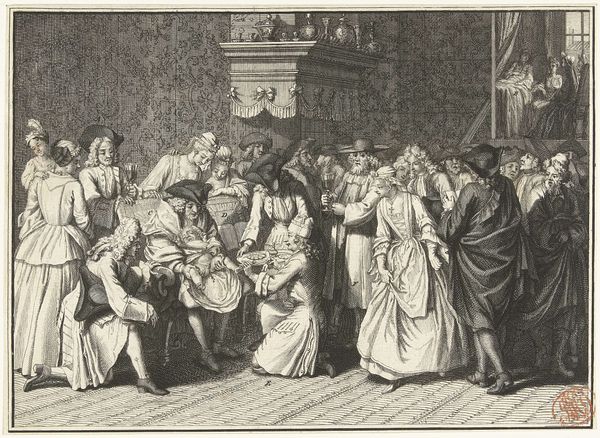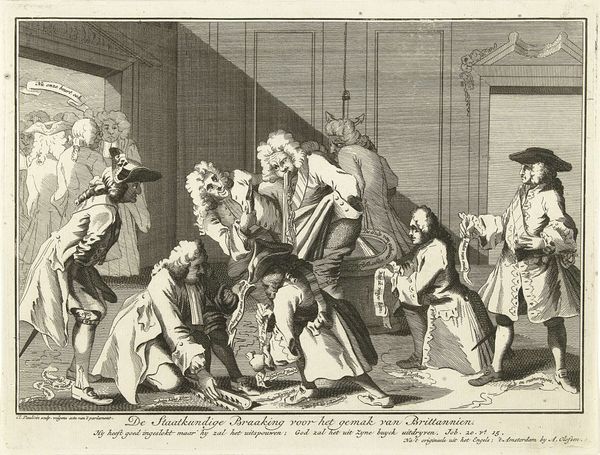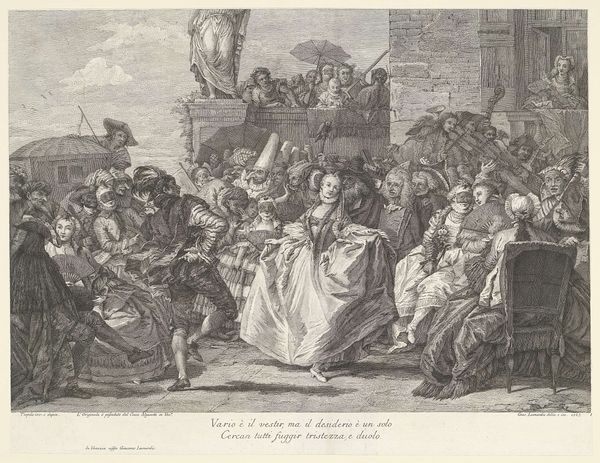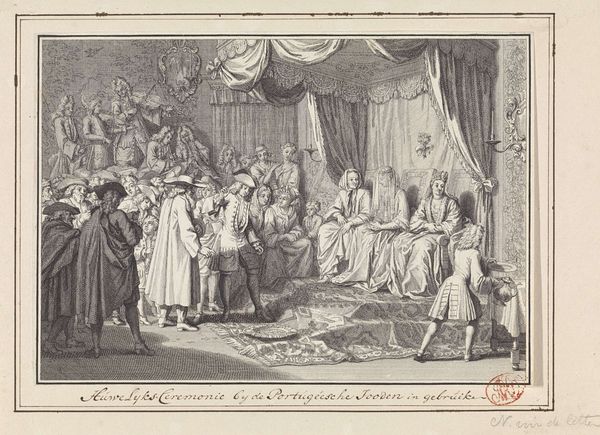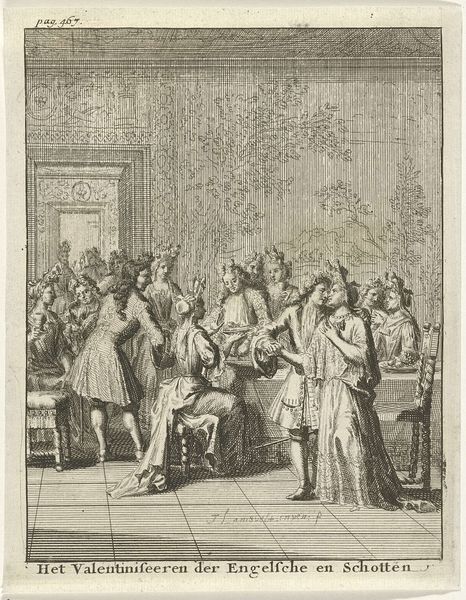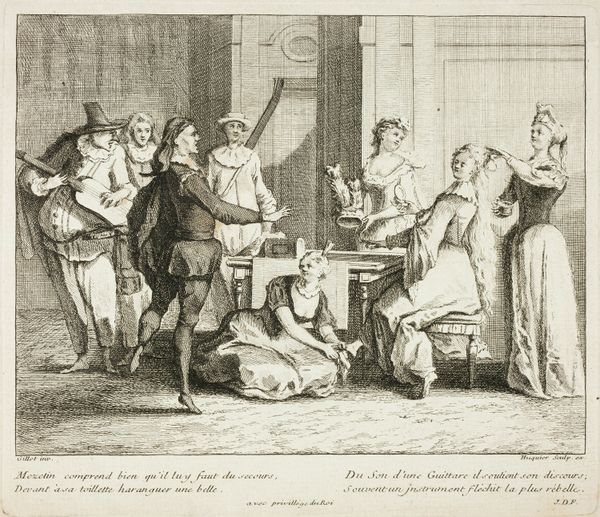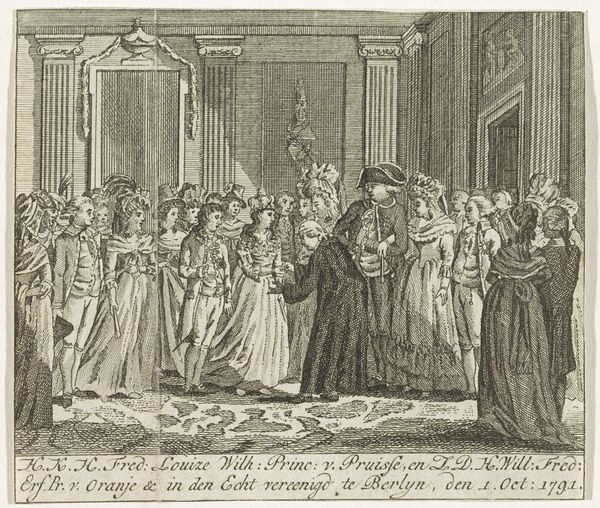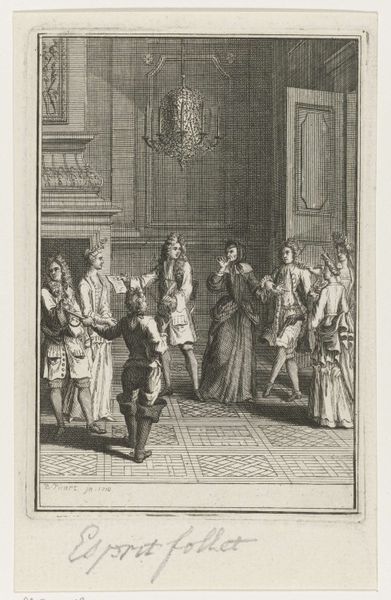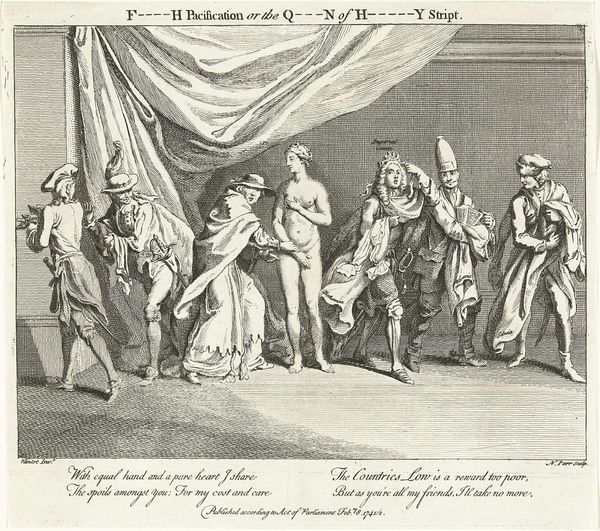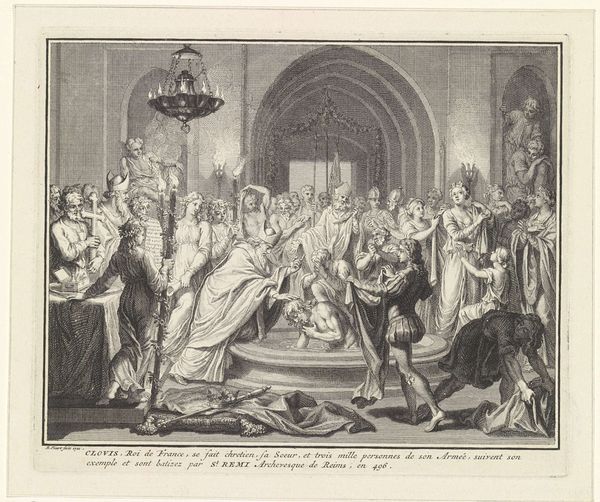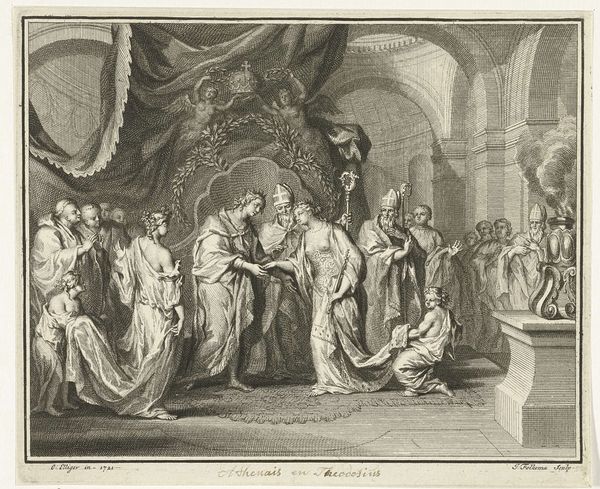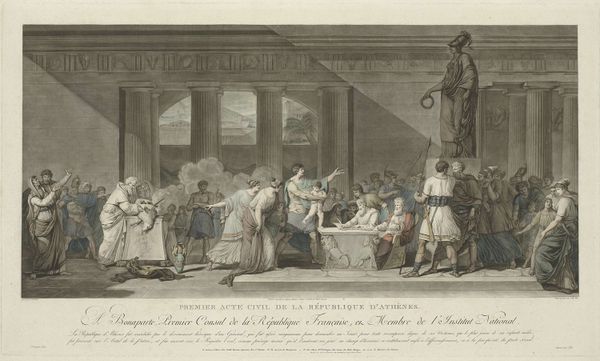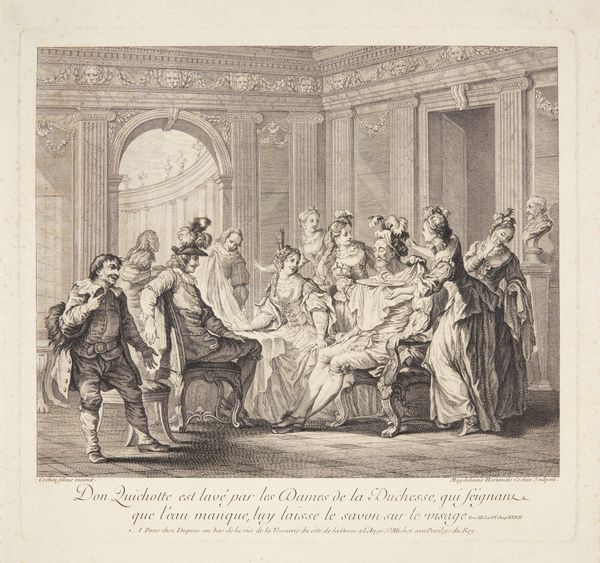
engraving
#
narrative-art
#
baroque
#
old engraving style
#
traditional media
#
figuration
#
genre-painting
#
history-painting
#
engraving
Dimensions: height 165 mm, width 213 mm
Copyright: Rijks Museum: Open Domain
Curator: I'm immediately drawn to the dense, intricate line work. The texture of the engraving itself creates a palpable atmosphere within this interior scene. Editor: We’re looking at "The Redemption of the Firstborn," an engraving made circa 1720-1725. The Rijksmuseum attributes this piece to an anonymous artist. The scene presents a narrative, deeply embedded within the traditions and socio-cultural context of its time. Curator: Indeed. The composition leads the eye in a delightful dance—note the diagonal created by the gathering of figures, leading us toward the mother and child in the right corner. It has this sense of theatrical performance, reminiscent of baroque staging. Editor: Observe how the engraver depicts a relatively affluent setting, signified through the elaborate clothing and interior décor. It's intriguing to think about the social practice represented: the ritual of redeeming the firstborn, and what material value was assigned to this act. Curator: Exactly! The print is rich with detail, ripe for semiotic analysis. The mother, the gathering of men with hats, even the small details like the portrait hanging on the wall—every element contributes to a larger system of meaning. The opening door contrasts an open, enlightened way of life from what the people in the room want to accomplish. Editor: Consider too the technical skill. It took a great deal of expertise to transform the tangible ceremony to print. The artist had to capture subtle textures, and emotional nuance using just line and negative space. Think also of the network involved – from the printmaker to the distributors to those buying such prints: all participated in reinforcing specific power structures. Curator: I'm taken by the use of light and shadow, or perhaps its deliberate absence. The relative flatness, in the image, enhances a symbolic or iconic understanding that transcends naturalism, allowing this material object to transmit historical memory. Editor: Studying this engraving allows us to peek behind the curtains. It highlights material interactions and cultural expressions within a specific time period and social framework. Curator: An enigmatic engraving indeed. Editor: One that surely merits continued reflection.
Comments
No comments
Be the first to comment and join the conversation on the ultimate creative platform.
